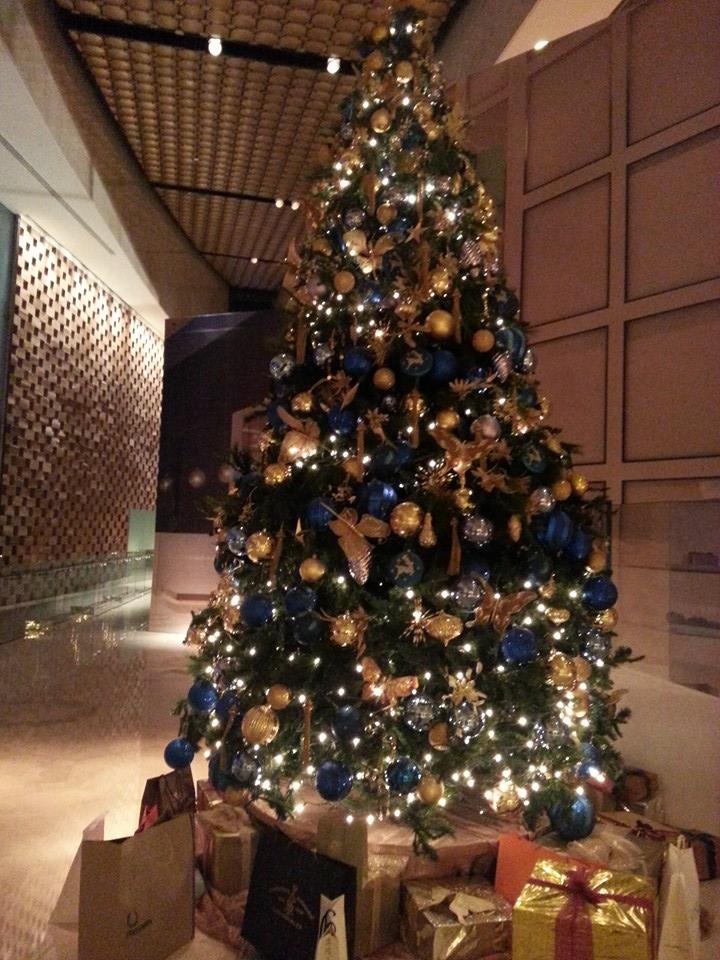
23 Dec Merry Christmas from Around The Globe!
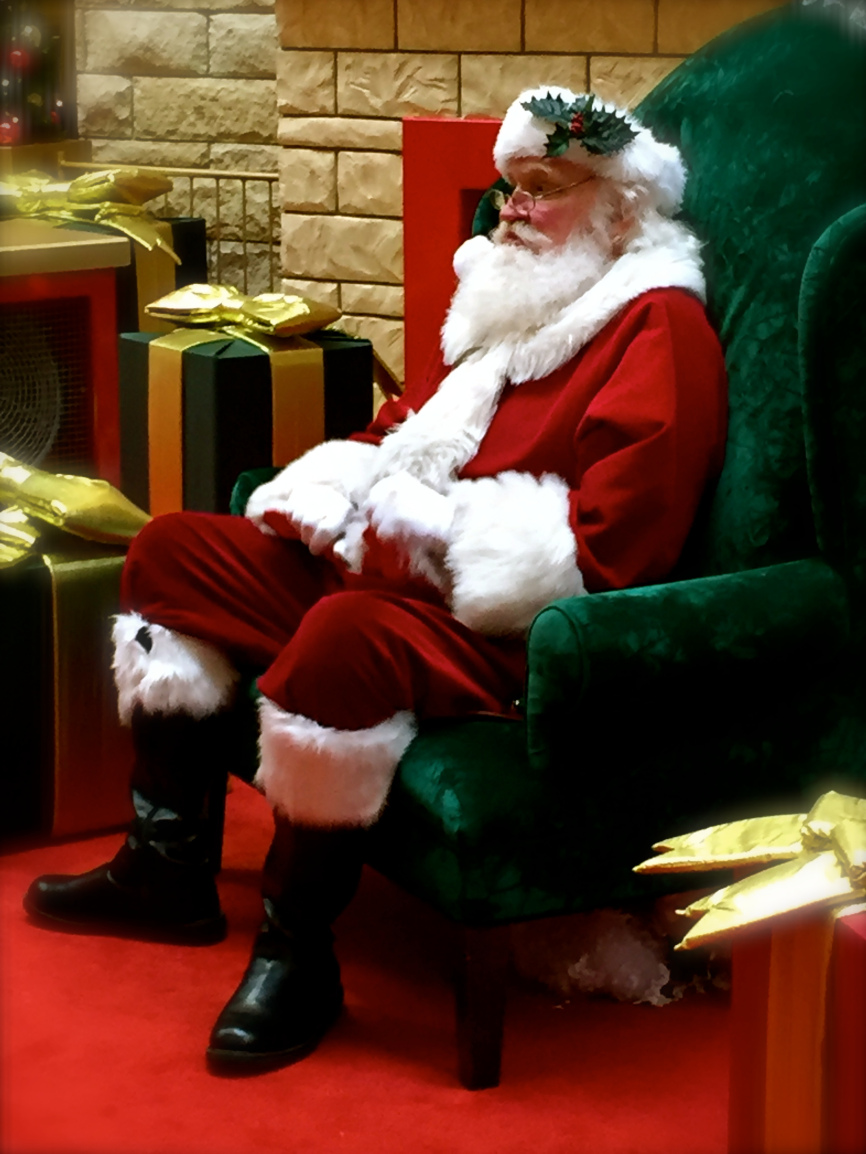
Santa takes a break, in a mall in Oregon, USA. Image Courtesy Sabine Ramage
Bun Karyudo (a friend and fellow blogger) says, “Posts about Christmas are expected blogger fare. It’s as much a part of the Yuletide season as wrapping paper and reindeer poo.” So, here it is. My own voice added to those of many others, writing and talking about Christmas.
Ho! Ho! Ho!
So, it’s Christmas, is it? Do you know the story behind Christmas? Of Course, you do! Duh, Me!
But did you know that it’s absolutely fine to refer to Christmas as X’mas, as it can also mean Christmas; but that it should be pronounced ‘Christmas’ rather than ‘ex-mas’!
Ok, so you know that too! But, do you know the various traditions attached to Christmas and how it is celebrated around the world?
Ha! Gotcha! Fret not, my child! ‘Coz I bring to you the Christmases’ Around the Globe.
Psst.. Christmas celebrates the birth of Jesus, but it is commonly thought that Jesus was actually born in Spring or Autumn and not in Winters. No one knows the real birthday of Jesus!
The word Christmas comes from Christ-Mass – a mass service (which is sometimes called Communion or Eucharist) where Christians remember that Jesus died for us and then came back to life. The ‘Christ-Mass’ service was the only one that was allowed to take place after sunset (and before sunrise the next day), so people had it at Midnight, hence the tradition of Midnight Mass!
Despite the differences in customs, traditions and beliefs associated with Santa Claus, in fact even where he lives; everyone agrees that Santa Claus travels through the sky on a sledge that is pulled by reindeer, that he comes into houses down the chimney at night and places presents for the children in socks or bags by their beds, in front of the family Christmas tree, or by the fire place.

Image Courtesy Dawn Marie
Finland
Originally said to be the official home of Santa, this place is the hub of Christmas celebrations with its own theme park called “Christmas Land”!
In Finland, Santa might also be known as Joulupukki! (This really means ‘Christmas Goat’ as it was traditional in Finland that there was a Yule Goat who was scary and asked people for presents – and certainly didn’t give any out! Over time the goat became the gift giver and then Santa took over the gift giving duties but the name of the Christmas Goat was still retained in Finland!) Joulupukki rides with reindeer and leaves gifts under the Christmas tree but if you have been naughty you could end up with a bag of coal!
Everyone tries to be at home for Christmas, including fishermen who try to get their boats into the harbour by December 21st, St. Thomas Day.
Animals are given their own Christmas in Finland, with farmers sometimes hanging a sheaf of wheat on a tree to be eaten and pecked at by the birds. Nuts and pieces of suet are also hung on trees in bags from the branches.
Everyone cleans their houses ready for the three holy days of Christmas – Christmas Eve, Christmas Day, and Boxing Day. On Christmas Eve, or the day before, Christmas trees are bought from the local market or square. Christmas Eve is very special and the most important day in the Christmas celebrations. It’s traditional to eat rice porridge and plum fruit juice for breakfast. Then the tree is bought (if it hasn’t been already) and is decorated.
The main Christmas meal – a leg of pork served with mashed potato traditionally baked slowly in birch-bark boxes in the oven with similarly cooked mashed swede, is eaten early in the evening. Casseroles containing different vegetables including, rutabaga, carrot and potato are also common. Cured salmon is very popular and some people also have turkey. Desert is baked rice pudding/porridge eaten with spiced plum jam. One almond is hidden in the pudding. It is believed that whoever finds the almond, will be lucky for the next year.
Because it gets dark very in most parts of Finland around Christmas (about 3:00 p.m.), it’s now traditional to go cemeteries and visit the graves of family members, and hanging lanterns are left around the grave. The whole cemetery is alight with glowing lanterns shining in the snow – a winter wonderland.
Australia & New Zealand
It’s summer time in Australia, and temperatures go up very high causing major bush fires around the country. This keeps many fire-fighters and volunteers busy all through this time, sometimes even travelling across the country to help in other states.
In Australia, it is believed that Santa gives the reindeers a rest and instead uses kangaroos to pull the sleigh. He also changes his clothes for less ‘hot’ ones!
‘Christmas Bush’, a native Australian tree with small green leaves and cream coloured flowers, is commonly used for decorating homes and gardens. Christmas Carols are sung on Christmas eve, and performances by famous singers are broadcast on television.
Most towns and cities have festivals and parades. In some places, there is a fireworks display at the local park. At many places, the people hold their own Carols by Candlelight services, with local bands and choirs sometimes helping to perform the Christmas Carols and songs.
New Zealand is the first country to actually celebrate Christmas, located immediately west of the International date line.
Being Summer season in this part of the world, beach parties, camps, barbecues are popular. Food like meats, sea food and Cold desserts like ice creams, fruit salads, jelly are served.
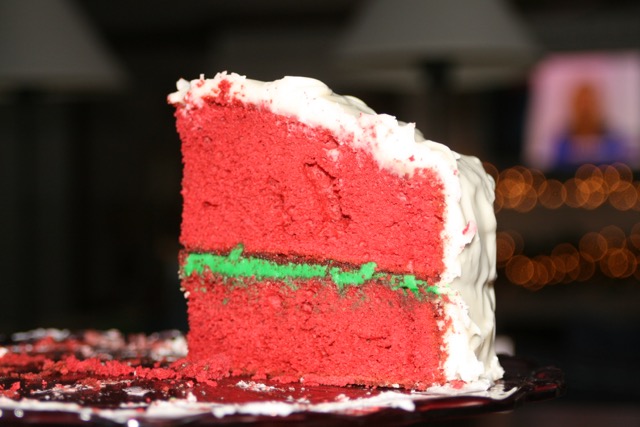
Birthday Cake for Jesus Christ Image Courtesy – Dawn Marie
Austria
Every town will also have a large Christmas Tree in the town square. Decorations include candles (now often electric and) and sparklers. In homes, trees are decorated with gold and silver ornaments and stars made from straw. For children, other important decorations are sweets such as small liqueur-filled chocolate bottles, chocolates of various kinds, jelly rings and ‘Windbäckerei’ (meringue, usually in the form of rings, stars, etc.).
Christmas starts around 4.00 p.m. on Christmas Eve, when the tree is lit for the first time and people come to sing carols around the tree. The most famous carol is Silent Night (‘Stille Nacht’), which was written in Austria in 1818.
The main Christmas meal is eaten on Christmas Eve, and is often ‘Gebackener Karpfen’ (fried carp) as the main course because Christmas Eve was considered a ‘fasting’ day by many Catholics and no meat could be eaten. However roast goose and roast turkey are becoming more popular. Dessert can be chocolate and apricot cake also called ‘Sacher Torte’, and Austrian Christmas cookies.
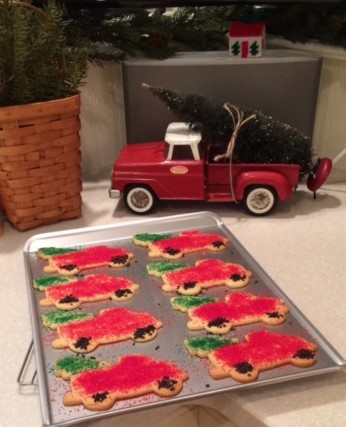
Christmas Truck Cookies. Image Courtesy Dawn Marie
Belgium & Netherlands
The name Santa Claus comes from the Dutch name of St. Nicholas – Sinterklaas.
For the Dutch, December 5th and 6th are the days of significance. St. Nicholas Day is celebrated on December 6th, but major celebrations are held on December 5th, when Sinterklass brings the presents.
As per Dutch tradition, St. Nicholas lives in Madrid, Spain and every year chooses a different harbour to arrive in Holland, so as many children as possible get a chance to see him.
Sinterklaas parties are often held on St. Nicholas’ Eve (5th), where treasure hunt games are played, with poems and riddles giving away the clues to find little presents left by Sinterklaas. Special biscuits and sweets are also eaten at the party. One type of biscuit, called banketletter (meaning letter cake) is made from marzipan in the shapes of the first letter of the names of people who are at the party. Another sweet biscuit that is eaten at the parties are ‘pepernoot’ which are made with cinnamon and spices in the pastry biscuit mix.
On the 6th of December Sinterklaas (the birthday of Sinterklaas) leaves the Netherlands by steamboat via the entrance of the port of Rotterdam (Europe’s largest port) called the Hook of Holland and he travels back to Spain.
Christmas Day itself is much quieter with a Church Service and family meal. Sometimes there is a special Christmas Day ‘Sunday School’ in the afternoon at the church, where the Christmas Story and other traditional stories are told. There are no presents given out on Christmas Day because the children have already received most of their presents on St. Nicholas Day.
On Christmas Eve night, Dutch children believe that Santa Claus, (who is also call ‘Christmas man’ / ‘Kerstman’ to avoid confusion with Sinterklaas!) comes from Lapland in Finland to deliver more presents!
In Belgium, also the visit of Sinterklass is different than Christmas. On Christmas Eve, the meal starts with a drink (apéritif) and ‘nibbles’, followed by a starter course such as sea-food, and then stuffed turkey. The dessert is usually a chocolate Christmas Log (also known as Yule Log at other places world over)
Psst… if you were to visit Ukraine at Christmas, you would wonder whether they were celebrating Christmas or actually Halloween. Trees here are decorated with artificial spider weds and decorative spiders, to refer to the tale of a mythical spider who wove a web around the plain tree of a poor family. When morning came, the white strands turned to precious metals and the family was rich. The webs today symbolize prosperity for the next year.

Ali Isaac’s Christmas tree, all decked up at their home in Ireland.
Canada
Due to its large size and multi-cultural population, Canada observes many traditions and celebrations associated with other nationalities at Christmas.
Nova Scotia is known all over the world for its fir and pine Christmas Trees, so most families in Canada have a fir or pine Christmas Tree. One Canadian tradition is to send the biggest, best fir tree (grown in Nova Scotia) to Boston, USA because of the assistance given during the disaster, known worldwide, as the Halifax Explosion. This tradition has carried on for many years. Bostonians always love and appreciate the Nova Scotian Christmas tree. They place this tree in the city and then light it during a ceremony to begin the Christmas season.
Mummering, originally from Rome and later Great Britain, is a common tradition in Newfoundland. It’s also sometimes called ‘Jannying’. Earlier versions of Mummering have now been banned, due to the violent nature and damage caused to human life and public property. Recently, the activity of Mummering is more fun and similar to a surprise visit from friends dressed up in costumes. The host must be able to guess who the visitors are, inviting them in and joining in the merry making. Singing, dancing and eating Christmas cake before the mummers move on is part of the tradition.
Going Mummering is a fun Christmas season activity for adults. Mummers usually come out between December 26th and January 6th (The 12 Days of Christmas).
Another version of Mummering is Belsnickeling, more common at Nova Scotia where people dress up in funny Santa costumes and go from house to house until the home owners guess who you were. The Belsnicklers often brought musical instruments and sang.
Toronto holds one of the oldest and largest Christmas parades – The Santa Claus Parade. It started in 1913 and is now over a 100 year’s tradition. The event, at last count, had participation from over 25 animated floats and 2000 people!

Genevieve gets into festive mood with some lovely nail art.
France
Decorations are mainly of nativity scenes, containing clay figures of Nativity figures and also of, a Butcher, a Baker, a Policeman and a Priest. During December some towns and cities, such as Marseilles, have fairs that sell Nativity figures. Yule Logs made out of Cherry Wood are often burned in French homes. The log is carried into the home on Christmas Eve and is sprinkled with red wine to make the log smell nice when it is burning. There is a custom that the log and candles are left burning all night with some food and drinks left out in case Mary and the baby Jesus come past during the night.
The main Christmas meal, called Réveillon, is eaten on Christmas Eve/early Christmas morning after people have returned from the midnight Church Service. Dishes might include roast turkey with chestnuts or roast goose, oysters, foie gras (pronounced foy gra), lobster, venison and cheese. For dessert, a chocolate sponge cake log called a bûche de Noël is normally eaten.
- Image Courtesy Dawn Marie
- Image Courtesy Dawn Marie
Nativity Scene at St. Joseph’s-Bread of Life Church in Erie, Pennsylvania USA. The Church will celebrate it’s 150th year Anniversary in 2016. This manager scene fulfills a promise made during WWII to have a manger scene donated to our Church. The Nativity was purchased in Germany in 2013 completing the promise some 55 years ago.
Germany
The period of Advent is of much importance in Germany and Austria. Advent means ‘Coming’ in Latin, and refers to the coming of Jesus into the world. It is the period of four Sundays and weeks before Christmas, that Christian use to prepare and remember the real meaning of Christmas.
Several different types of calendars are used in to mark the period of Advent.
Apart from the traditional wreaths, there are others made out of a wreath of Fir tree branches with 24 decorated boxes or bags hanging from it. Each box or bag has a little present in it. Another type is called a ‘Advent Kranz’ and is a ring of fir branches that has four candles on it. This is like the Advent candles that are sometimes used in Churches. One candle is lit at the beginning of each week in Advent.
Germany is well known for its Christmas Markets where all sorts of Christmas foods and decorations are sold. Perhaps the most famous German decorations are glass ornaments. The glass ornaments were originally hand blown glass and were imported in the USA in 1880s.
The Christmas tree was traditionally brought into the house on Christmas eve: and If there are young children in the house, the trees are usually secretly decorated by the mother of the family. In some parts of Germany, during the evening the family would read the Bible and sing Christmas songs such as O Tannenbaum, Ihr Kinderlein Kommet and Stille Nacht (Slient Night)
Carp or Goose are often served for the main Christmas meal. Stollen is a popular fruited yeast bread that is eaten at Christmas.
Psst… in Japan, eating at KFC during Christmas is so popular that you would need to make a reservation to eat there on this day.
India
Christmas is mainly celebrated in metro cities and cities with high Christian population like Delhi, Goa or Mumbai. The states of Manipur, Meghalaya, Nagaland and Mizoram (all on the very east of India) also have high populations of Christians. Christmas starts with a Midnight Mass, followed by a massive feast and exchange of presents.
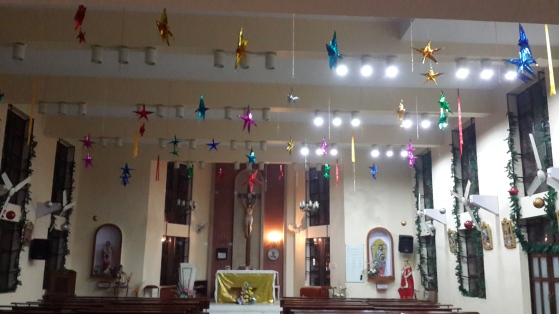
Christmas Decorations at a Church in India
Churches are decorated with Poinsettia flowers and candles for the Christmas Eve Midnight Mass service. Fake Christmas trees (or real a banana or mango tree or any other tree) is decorated with stars, bells, baubles and other Christmas ornaments. Nativity scenes are recreated as community activity in Common areas and Churches.
In north-west India, the tribal Christians of the Bhil folk, go out every night to surrounding villages singing to people the whole night through, and telling the Christmas story.
In Kerala, Traditional Catholics fast don’t eat from 1st to 24th of December – until the midnight service. Every house is usually decorated with a Christmas star.
Norway
Every year, Norway donates a very large Christmas tree to Trafalgar Square for the British to raise to say thank you for the help they received in the Second World War. The main Christmas meal is served in the evening. For a lot of Norwegians, especially families, television is an important part of the earlier hours of Christmas Eve. Many Norwegians do not feel the Christmas spirit until they have watched the Czech-German fairy tale Three Nuts for Cinderella or the Norwegian fairytale movie Reisen til Julestjernen (“The Nutcracker”).
Attending one of the many stage productions of Putti Plutti Pott and Santa’s Beard is also a very popular tradition.
Norwegians must put away their brooms on Christmas Eve. Legend has it that evil witches may come and steal them away if they are left out.
United States of America
Christmas here has the influence of many other cultures and countries, and, hence many customs are similar to ones in the UK, France, Italy, The Netherlands, Poland and Mexico.
Traditional meal consists of roast turkey or ham with cranberry sauce.
People in America like to decorate the outsides of their houses with lights and sometimes even statues of Santa Claus, Snowmen and Reindeer.

Christmas Decorations outside Dawn Marie‘s home in USA
Towns and cities often decorate the streets with lights to celebrate Christmas. At the Rockefeller Center in New York, a huge Christmas Tree which is put up and remains there well after Christmas and the New Year.
In Pennsylvania, USA, Dawn Marie and her neighbours, get together and decorate a “Community” Christmas Tree, using donated ornaments each year.
- Dawn’s Golden Retriver, Helen Kowalska, beside their community Christmas tree
- Dawn, and Helen’s donation this year
Psst… Rudolph, the reindeer might actually be a girl since only female reindeer keep their antlers through winter!
United Kingdom
Christmas in UK is celebrated the traditional way with a mix of modernity. Most towns will hold carol services at the local churches and schools. Christmas markets come up in and around residential neighborhoods, and offer lots of lovely food, treats and crafts.

Ralph, the newest addition to Jake Reid’s family, stares at the Christmas Tree in their home in UK
The decoration of a Christmas tree is usually a family activity. Some families choose to put up a real tree which is later replanted, while others prefer to use a synthetic one. It is decorated with stars, fairy lights, tinsel, beads, baubles and other Christmas ornaments. The day before Christmas Day is spent wrapping presents, baking cookies, and hanging stockings over the fireplace.

Christmas tree decorated by Lou and her kids at their home in UK.
There are many events leading up to Christmas where carol singers sing around the tree or someone tells a classic holiday story, “A Christmas Carol.”
Children write a letter to Father Christmas with their wishes and toss their letter into the fire so their wishes can go up the chimney. After the children fall asleep on Christmas Eve, Father Christmas comes to visit. He traditionally fills up the stockings and maybe leaves one or two gifts under the tree. Christmas dinner consists of roast turkey, roast potatoes, parsnips and carrots and other vegetables.
It is also popular in this country for children to attend a theatre to watch a pantomime.
Personal Stories
During a trip to Colombia last year, Ann Crandall felt out of place among a younger crowd and expressed to her son (who was travelling with her; he’d found friends his age, she hadn’t) her desire to move out to a more traditional hotel with Christmas decorations. This may sound sad and would have been a lonely Christmas for Ann, but the younger international crowd was having none of that. Their hostel buddies anointed Ann as their “Christmas Mom” and everyone pitched in to decorate the hostel and even cooked for her. Read her amazing, heart-warming story here.
Read Lou’s personal and very interesting account of how her family pitches in to decorate the tree for Christmas here.
Home Alone this Christmas? Or away from home during these holidays? You may be alone but you don’t have to be lonely!
Get into the festive mood by watching Christmas movies. Check out Rashmi’s Top Favourites for more movie names.
Watch Joanne’s video of a Fillipino choir group singing Christmas carols in a Bahrain hotel.
Bring out those family photos. Light candles and put up Baubles, Bells, Wreaths or whatever else is easily available. If nothing is available, just twist red and green ribbons or streamers and put those up. Hell, light up a cactus if you can’t get hold of an original pine tree or use these tips from Joanne to make the best of wherever you are.
Or indulge in some holiday baking like Dawn Marie.

Dawn Marie’s homemade Apple Pie, Pumpkin Pie, and Pecan Pie
Or maybe not! Bun Karyudo thinks, for the Christmas dinner, his wife bought some kind of poultry!
“…possibly an Ostrich but more likely a cloned Madagascan Elephant Bird.”, he says. Read more about his family’s Christmas preparations and his unsuccessful attempts at writing a Christmas post (ironically so, amidst all the ongoing festivities). I think despite his so called unsuccessful attempts, he did succeed at writing, and a hilarious one at that!

My human family and I wish you a Merry Christmas and a Happy New Year!
Are you with family or away this time? How do you plan to celebrate Christmas? Share your ideas and thoughts here and let’s all celebrate together!
All photos in this article have been contributed by friends and fellow bloggers, and rights of the same are retained by the individual themselves. Usage of the above photos without permission is prohibited. The author does not have the right to use these photos except for the sole purpose of including them in this article.
This article has been written and compiled using various sources, including first hand accounts and information gathered from the internet.
Sources & Additional Reading –
- http://www.whychristmas.com/customs/christmas_or_xmas.shtm
- http://www.whychristmas.com/customs/25th.shtml
- https://beingmepresently.wordpress.com/2015/12/18/tis-the-season/
- https://beingmepresently.wordpress.com/2015/12/19/boxing-day/
- http://peregrinewoman.com/2015/12/16/colombia-the-hostel-christmas-mom/
- http://birdwithwings.com/2015/12/19/surviving-the-holidays-elsewhere/
- http://peregrinewoman.com/2015/12/20/ecuador-christmas-eve-days-pase-del-nino/
- http://peregrinewoman.com/2015/12/08/poulsbo-a-norwegian-christmas-at-home/
- http://bunkaryudo.com/christmas-christmas-christmas-blah-blah-blah/
- http://hugsnblessings.com/



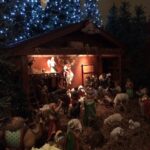
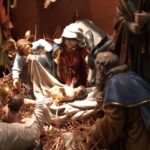

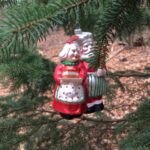

incahootswithmuddyboots
Posted at 23:25h, 23 DecemberVery nice post! You did a wonderful job of researching details! Merry Christmas and a happy New Year to you and your human family! 🎄
judyalexander47
Posted at 07:21h, 24 DecemberGreat international.flavor about christmas
MindandLifeMatters
Posted at 13:03h, 24 DecemberWell researched and well written!
Merry Christmas to you too! 🙂
Pingback:Sunshine Blogger Award Round Five! | blabberwockying!
Posted at 13:17h, 24 December[…] Wandering Soul […]
Pingback:SUNSHINE BLOGGER AWARD | EXPRESSIVE HUMAN|ORIGINAL THOUGHTS
Posted at 16:50h, 24 December[…] Wandering Soul […]
Pingback:The Real Neat Blog Award! | Blogmaniac
Posted at 11:17h, 25 December[…] wanderingsoul2015blog.wordpress.com […]
Pranjal
Posted at 16:06h, 25 DecemberVery informative post.
Lovely effort!
You could feature posts like this for various festivals.
Would be a good collection. 🙂
Wandering Soul
Posted at 16:33h, 25 DecemberHi Pranjal, thanks so much. Am coming up with one such post for New year’s celebrations. Would love you to contribute 🙂
Pranjal
Posted at 12:07h, 26 DecemberHey nice idea 🙂
Am all for it. Just tell me how.
Wandering Soul
Posted at 13:13h, 26 DecemberGreat! All you need to do is mail me the pics of your New Year’s celebrations. look forward to your pics. 🙂
Pranjal
Posted at 14:18h, 26 DecemberDone
Pingback:The Real Neat Blog Award | EXPRESSIVE HUMAN|ORIGINAL THOUGHTS
Posted at 17:18h, 25 December[…] Wandering Soul […]
izabolinha
Posted at 18:22h, 29 DecemberThis is a wonderful post ! You went through a lot of researching and linking for it ! Thank you 🙂
Turtle Hugs 🙂
Wandering Soul
Posted at 18:39h, 29 DecemberThank you, so much! It was interesting to compile all that information. Glad you liked it. Turtle hugs to you too 🙂